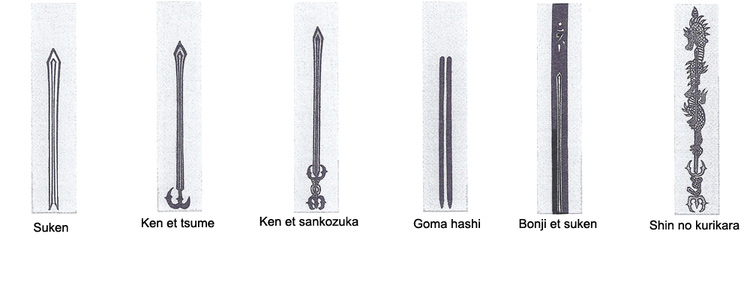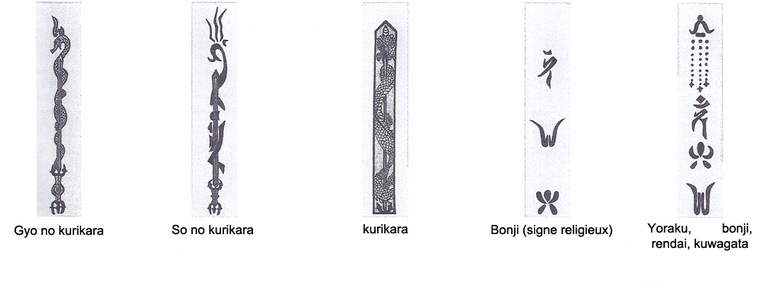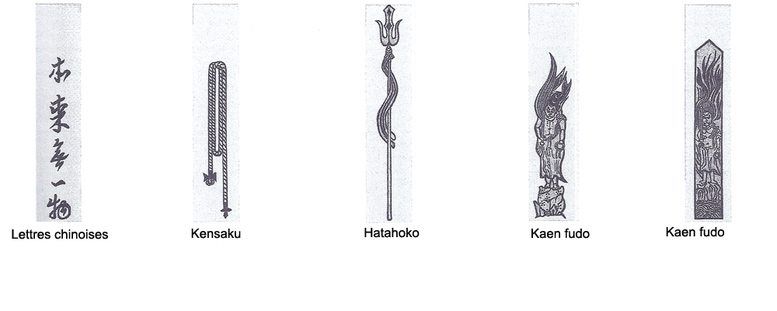Engravings or Horimono on katana
Horimono or Chōkoku (彫刻, "sculpture") means in Japanese an engraving made on the visible part of the blade. We speak little of these Horimono, yet some engravings can be qualified as traditional because very widely used by many blacksmiths at various times. Most of the time, these engravings were made using ceremonial swords (many tantos therefore). Engravers were not always blacksmiths, it could be a profession in itself. These artisans were called the Horimonoshi (彫 物 師) or Chōkokushi (彫刻 師). These engravings generally had religious connotations.
The sword, or Ken, represented the deity Fudo Myoo:
The sword, or Ken, represented the deity Fudo Myoo:

This was also sometimes represented directly:
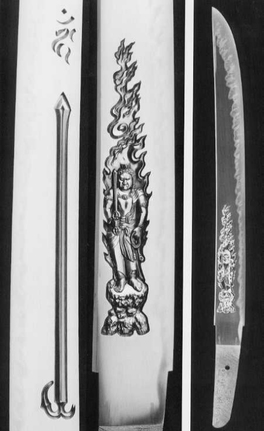
Fudo Myoo, also called the unchanging Acala or "Acalanātha" is a Buddhist deity related to fire and anger, also one of the five kings of knowledge. These kings of Science are the guardians of Buddhism, and Fudo Myoo is its leader.
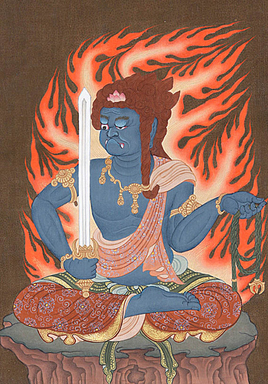
We also very often see Sankozuka or Vajra. Once again linked to religion, this ritual object represents enlightenment. In mythology, it is considered to be the first object to take shape in the universe. It symbolizes "effective action" par excellence.
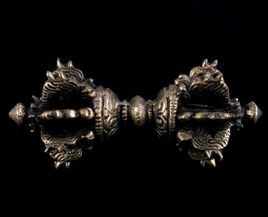
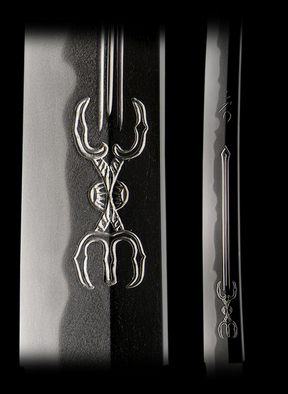
The Goma Hashi, used on the altars of Shinto temples, representing the Japanese saddles used during Buddhist ceremonies.

More common, the Bonji, Sanskrit religious symbols (Indo-European language):





Then comes the dragon (Ryu) very widely present.
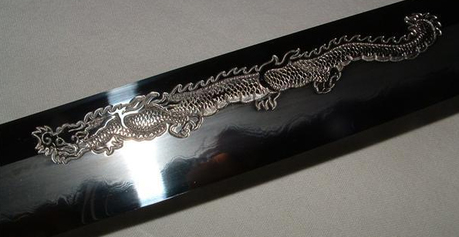
With its variants: Nobori-ryu / Kudari-ryu / Soryu made up of two dragons, Tamaoi ryu being a dragon pursuing the jewel of Buddhism, the Bai Ryu, surrounded around a tree, and finally the Joge Ryu, two dragons (l 'one ascending the other descending) around a sword (Ken).
The most famous variant, the “Kurikara”, surrounded around a sword.
With Le Shin no Kurikara, or realistic version:
The most famous variant, the “Kurikara”, surrounded around a sword.
With Le Shin no Kurikara, or realistic version:

There is also the Gyo no kurikara (simplified version) and the So no kurikara (stylized form):

So no Kurikara
Then comes the Kuwagata, representing the front of a helmet, a kabuto (see below).
And the Rendai, representing a lotus flower:
And the Rendai, representing a lotus flower:
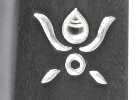
The Kensaku, which is a rope worn by the Buddhists of Fudo Myoo:

The Hatahoko (or halberd):

There are many other Horimono, in general all related to Buddhism (The deities Tachi Fudo, Kaen Fudo are also sometimes represented).
Here are some diagrams of these horimono (cf. Connoisseur's Book of Japanese swords, by Kohan Nagayama).
Here are some diagrams of these horimono (cf. Connoisseur's Book of Japanese swords, by Kohan Nagayama).
